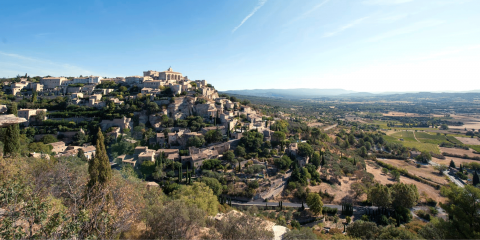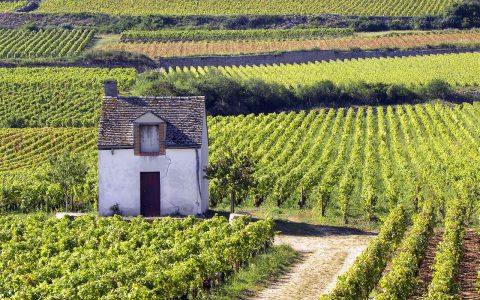Vines 101:
Bordeaux Wine
While expanding your palate is a worthwhile endeavour in its own right, it’s made all the more rewarding when you have a sense of the history behind the bottle. In our ongoing Vines 101 series, we pull back the curtain on some of our favourite wine regions in the world and explore their oenological offerings.
A (Very) Brief History of Bordeaux Wine
Wines have been made and shipped from Bordeaux for nearly 1,000 years, and vines have been planted there since Roman times. The wine trade has survived several disasters, including the Hundred Years’ War, the French Revolution, the Napoleonic Empire, and the two World Wars. Perhaps most devastating to the wine trade was Phylloxera vastatrix, a root-eating parasite of American origin. Between the 1860s and 1890, virtually every vine in France was destroyed. The dead vines were replaced with immune American rootstocks, but the industry didn’t fully recover until the outbreak of the First World War.
The Quality Pyramid

In Bordeaux, as in most of France, wines are labelled not by grape variety but by appellation, based on a delineated area of production. (For example: it’s not a Merlot, it’s a Pomerol…)
Overall, relative quality in Bordeaux can be expressed in pyramid form. At its base are dry white Bordeaux and Entre-Deux-Mers, red Bordeaux and Bordeaux Supérieur, which together represent about two-thirds of total production. Above these are the red and white wines from the Côtes. Next come the regional appellations (e.g., Graves, St-Émilion, Pomerol, Médoc and Sauternes). Above these regional wines are the châteaux that have been classified, beginning with the classification of the Médoc, Graves and Sauternes in 1855 and ending with the reclassification of St-Émilion in 2006. The Grand Crus and Crus Bourgeois are one notch higher, followed by the Crus Classé. Finally, at the top, are the Premiers Crus Classé.
Explore 20,000
Years of Culture
We begin our Bordeaux to Dordogne Biking trip in Bordeaux, where the riding is as smooth as a Château Mouton Rothschild (you’ll understand soon enough). Then, it’s eastward to the Dordogne Valley, land of medieval castles, Cro-Magnon cave paintings and exquisite cuisine.
DETAILED ITINERARYThe Art of Blending
The most copied and perhaps the most mysterious element of winemaking in Bordeaux is the practice (or art) of blending.  Each variety, or cépage, has its own strengths and weaknesses, as well as its own distinct character. These differences can complement each other when wines are skilfully blended, making a whole that is better than the sum of its parts… especially considering that the quality of the various cépages will vary according to the weather conditions during the growing season. Blending is thus a major contributor to the stable quality of Bordeaux wines: the blend can be changed each year to take advantage of the conditions of that vintage.
Each variety, or cépage, has its own strengths and weaknesses, as well as its own distinct character. These differences can complement each other when wines are skilfully blended, making a whole that is better than the sum of its parts… especially considering that the quality of the various cépages will vary according to the weather conditions during the growing season. Blending is thus a major contributor to the stable quality of Bordeaux wines: the blend can be changed each year to take advantage of the conditions of that vintage.
A typical red Bordeaux blend will be dominated by Cabernet Sauvignon, for its structure, finesse, aromatic complexity and ability to age, and Merlot, for its full, rich and friendly character.
There are six red grape varieties in Bordeaux. Normally, the softer merlot is the first picked, followed by the cabernet franc, the cabernet sauvignon and then the petit verdot. Traditional Malbec and the lesser-known Carmenère are getting more and more difficult to find. White varieties include Sauvignon Blanc for freshness and aromatics, Semillon for richness and body, and smaller quantities of Muscadelle, also used to provide aromatic complexity.
Still Thirsty?
Some wine regions, like some crus, are simply too grand for a single blog post. We continue our exploration or Bordeaux wine in Vines 102: Bordeaux, where we examine Bordeaux’s most renowned wines, along with appellations from the neighbouring Dordogne.
MORE FROM France + Bordeaux

Grape Harvesting in Ventoux
France
The Top 5 Hiking Routes in Provence and Cote d’Azur
Provence
With Vineyards, Beaches, and Quaint Villages, Île de Ré Is France’s Best-kept Secret
France
Photo Diary: A Sunday in Provence with B&R Guide Tatjana Buisson
Provence
5 Ways to Relive the Renaissance in the Loire Valley
Loire Valley
The Best Luxury Hotels in Paris: From Classic to Contemporary
France
Secrets of the Seine
Île-de-France
6 Reasons Why You Need to Visit Normandy, France
Normandy
10 Best Markets & Shops in Provence
Provence
Bordeaux Nouveau: France’s Coolest City Right Now
Bordeaux
Falling Head Over Heels for Burgundy
Burgundy
The World’s Best: Top 15 Bordeaux Wines
Bordeaux
Rediscovering A Classic: Burgundy
Burgundy
Reading for the Road: Our 5 Favourite Books About Bordeaux
Bordeaux
The Pleasures of Southwestern France
Bordeaux
Normandy’s Showstopper: Mont Saint-Michel
Normandy
Reading for the Road: Our Favourite Books About Normandy
Normandy
Abbaye de la Bussière: English Hospitality in the Heart of France
Burgundy
Secrets of the Loire Lifestyle
Loire Valley


